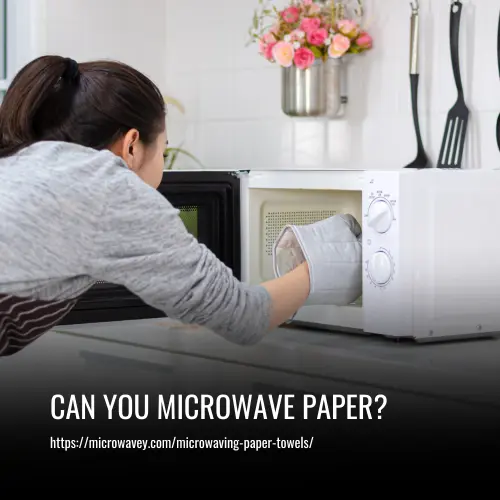How To Reheat Leftovers In A Microwave Oven
As a microwave oven chef, I’m here to tell you the best way to reheat leftovers. Reheating your food in a microwave is quick and easy, allowing you to get back to enjoying your meal before you know it. But if done wrong, it can leave you with a soggy or dry dish that’s far from enjoyable.
Read on for my top tips on how to reheat leftovers in a microwave oven so they taste just like new!
No matter what type of leftovers you have, whether its pizza, lasagna or something else entirely, there are some simple steps you can take to make sure your food tastes as good as when it was first prepared.
With the right technique and knowledge of your specific model of microwave oven, you’ll be able to enjoy all your favorite dishes again in no time at all!
Prepare Your Leftovers
As an experienced microwave oven chef, I know how important it is to reheat leftovers correctly. Did you know that nearly 85% of Americans heat up food with a microwave at least once a week?
With the right approach and technique, it’s not hard to properly prepare your leftovers. When determining portions for reheating leftovers in the microwave, make sure to separate them into shallow containers or on plates so that they cook evenly.
Additionally, store any leftover items in airtight containers before refrigerating; this will help prevent spoilage and keep the food fresh longer. Taking these steps when preparing and storing leftovers will ensure that your meals are always cooked thoroughly and deliciously!
Adjusting Power Settings
Now that you’re all set with your leftovers, it’s time to adjust the power settings of your microwave oven. It’s essential to get this right if you want to avoid overcooking or undercooking your food.
Here are a few tips for making sure the timing and power levels are just right:
Start by setting the timer for roughly half the amount of time recommended on the package instructions.
Once the timer is set, make any necessary adjustments in 10-15 second increments until desired results are achieved.
Adjust the power level accordingly based on how strong/weak you prefer your microwaved food.
With these simple steps, reheating your leftovers should no longer be a challenge! Remember that practice makes perfect when it comes to using microwave ovens – so don’t feel bad if you need to tweak each step as needed in order to get optimal results.
So go ahead and give it a try; after all, reheating leftovers doesn’t have to be complicated!
Covering Your Leftovers
As a microwave oven chef or expert, I’m here to tell you that reheating leftovers is easy and can be done quickly and safely. The key to keeping your leftovers safe when reheating them in the microwave is to cover them with something like plastic wrap or wax paper. This will help keep the food moist while preventing it from splattering all over the inside of your machine.
To make sure everything heats evenly, use this handy table below:
| Food Type | Temperature Setting | Time Recommended (minutes) |
|---|---|---|
| Vegetables | High | 4–5 |
| Baked Goods | Medium-High | 2–3 |
| Casseroles/Pastas/Soups | Medium-Low | 5–7 |
Reheating leftovers doesn’t have to be complicated; just follow these simple steps and you’ll enjoy delicious hot meals without having to start from scratch! With some experience, you’ll soon develop an instinct for how long each type of dish should take to cook so that it’s cooked properly but not overdone. Now get ready—it’s time to dig into those tasty leftovers!
Avoid Overcooking
When reheating leftovers in a microwave oven, it is important to take into consideration the portion size and cooking time. The amount of food being heated will determine how long you need to cook your leftovers – too little or too much can lead to overcooking. It’s best to start with shorter cooking times and then add more if needed.
If reheating multiple portions at once, be sure to spread them out evenly as this helps ensure that all pieces are cooked uniformly. Additionally, pay attention to the power setting on your oven – higher settings may cause some parts of the meal to overcook faster than others.
Keeping an eye on the progress throughout can help prevent any accidental burning or drying out of food items. To keep your leftovers from becoming dry or rubbery, make sure not to exceed the recommended cooking time for each item and check for doneness before serving!
Stirring Your Food
Reheating leftovers in a microwave oven is easy and convenient. As the microwave oven chef, I’m here to help make it even easier!
Here are my top tips for reheating your favorite meals:
Start with meal planning so that you can control portion sizes. This way you won’t be tempted to eat too much or waste food.
Place the container of leftovers into the center of the microwave plate. Heat on high power for one minute at first, then check if its warm by touching the outside of the dish lightly. If not, heat in 30 second intervals until hot throughout.
To keep moisture locked inside while heating, cover the plate with cling wrap or aluminum foil when microwaving leftover foods such as rice and pasta dishes which tend to dry out quickly.
Foods like pizza slices get crispier when heated on a lower setting; try starting at 50% power and slowly increasing to 100%.
Check how long each type of food takes to properly reheat by consulting cooking times printed on packaging labels or online resources. When in doubt err on the side of caution – better safe than sorry!
The key takeaway? With careful planning and mindful use of time and temperature settings, you can easily enjoy delicious leftovers any day of the week!
Checking Internal Temperature
Reheating leftovers in a microwave oven can be tricky. It’s important to make sure that your food is reheated properly and not just heated on the outside. Monitoring humidity levels and temperatures is paramount when it comes to reheating sauces, gravies and other liquids as they are more prone to burning or overheating than solid foods. To ensure that all of your meals are cooked evenly throughout, you should check the internal temperature before serving them.
Using a meat thermometer is one way to monitor the internal temperature while cooking in your microwave oven. A good rule of thumb is that most food items need to reach an internal temperature of 165°F (74°C) for safety reasons. Meat thermometers come in many varieties such as digital or analog models so make sure to choose one that suits your needs best! Here’s a handy table outlining some common types of food and their corresponding safe minimum internal temperatures:
| Food Type | Minimum Temperature (°F/°C ) |
|---|---|
| Beef | 145÷165 / 63÷74 |
| Pork | 160÷180 / 71÷82 |
| Poultry | 155÷165 / 68÷74 |
By monitoring the internal temperature during reheating, you’ll have perfectly cooked dishes every time! Be sure to adjust cooking times accordingly if needed – this will help prevent overcooking or undercooking any type of meal you’re preparing in your microwave oven.
Reheating Soups
Continuing on from the importance of checking internal temperature, it’s also essential to understand how to properly reheat soups in a microwave oven. Whether you’re storing soup or looking for an easy way to reach a safe serving temperature, here are some tips that will help ensure your meal is delicious:
Prepping and Storing Soup:
Store any leftover soup in an airtight container.
Refrigerate as soon as possible after cooking; this limits bacterial growth and helps preserve flavor.
If stored correctly, most soups can last up to 3 days in the refrigerator.
Reheating Soup:
Start by transferring the soup into a heatproof bowl with high sides. This prevents splatter when microwaving.
Heat at full power for 2 minutes then stir well before heating again for another minute or two until hot throughout.
Be sure to watch closely while reheating so it doesn’t boil over! It’s best not to overcook food in the microwave in order to retain its flavor and texture.
As you can see, following these guidelines makes it simple to safely enjoy all of your leftovers without compromising taste or quality.
Reheating Drinks
If you’re reheating coffee, it’s best to heat in short bursts of 10-15 seconds each, stirring between each so that it heats evenly. For tea, use a lower setting and heat for less time, around 8-10 seconds. For hot chocolate, you’ll want to heat for a bit longer and stir often to avoid it burning.
Reheating Coffee
Hey there, microwave oven chef here!
When it comes to reheating drinks, nothing beats a freshly brewed cup of coffee.
But what if you have some leftovers from yesterday? No problem – just pop them in the microwave and they’ll be ready again in no time!
All you need are your favorite brewing methods and coffee beans: Whether its French press or pour-over, ground up or pre-ground – whatever floats your boat!
Just ensure that the temperature is set low enough so as not to burn your precious brew.
Happy sipping!
Reheating Tea
For all the relaxing tea lovers out there, you can also reheat your favorite brew in a microwave! Just make sure to store it correctly – keep it away from strong odors and moisture as this will affect its flavor.
When brewing tea, use lower temperatures than with coffee so that you don’t burn the leaves. Then just pop it in the microwave for a quick warm up – perfect for those days when you want some hot tea but don’t have time to wait around for boiling water.
Enjoy!
Reheating Hot Chocolate
When it comes to reheating drinks, hot chocolate is one of the best! Just like with tea and coffee, you’ll want to store your hot chocolate away from strong odors and moisture so that its flavor doesn’t get affected over time.
There are a few different methods for reheating your favorite mug of hot cocoa – stovetop or microwave being the most popular. If using a microwave oven, heat in 30 second intervals until desired temperature is reached. You don’t want to burn the milk when doing this as it can give off an unpleasant taste.
So there you have it – quick and easy ways to enjoy your warm cup of deliciousness!
Reheating Frozen Meals
Are you looking for the best way to reheat frozen meals in your microwave oven?
Many people are intimidated by defrosting and heating up leftovers from a frozen meal. But, with the right tips and tricks, it is actually quite simple!
When using your microwave to heat up pre-prepared food, make sure that you’re aware of proper serving sizes. It’s important to spread out the food evenly across the plate or container so that it can be heated thoroughly.
Also consider investing in separate dishes specifically designed for use in microwaves; these often have lids which help trap steam during cooking.
For added safety when defrosting meats or poultry, set your microwave on a low power setting first before increasing the intensity – this helps prevent overcooking while ensuring any bacteria present is destroyed.
With just these few steps, you’ll be able to enjoy delicious homemade leftovers without having to worry about undercooking or overdoing them!
Cleaning Your Microwave Oven
As a microwave oven chef, I cannot stress enough the importance of sanitizing surfaces. Not only does it help keep your kitchen clean and hygienic but also helps to prevent bacteria from spreading through food.
To do this, you should use warm soapy water or an all-purpose cleaner with a rag or sponge. Make sure you always give special attention to the door handle, as this is one of the most used parts in the appliance.
When dealing with messes while reheating leftovers, be sure to wear protective gloves and use paper towels to wipe away any spilled liquids that may have occurred during the cooking process. You can then easily dispose of them afterwards without having to worry about cleaning up anything else!
Additionally, using glass containers instead of plastic ones when heating food will help minimize risk of melting plastics into your meal.
Conclusion
Let’s face it, no one likes eating cold leftovers. Reheating them properly in a microwave oven is the key to enjoying your meal as if it was freshly made! With these tips, you can make sure that your food is heated up safely and quickly so that you can enjoy every bite.
Reheating frozen meals can be tricky but with some practice, you’ll soon become a pro at microwave reheating. Be mindful of power settings and stir your food often when cooking – this will help ensure even heating.
Don’t forget to clean your microwave oven after each use too; this will keep it running efficiently for years to come.
So don’t let those leftovers go to waste – get creative and turn last night’s dinner into something new by reheating it in the microwave! And remember: have fun while re-creating delicious dishes with flair (and maybe a little bit of daring!). Who knows? You might just find yourself becoming an expert microwave chef!



